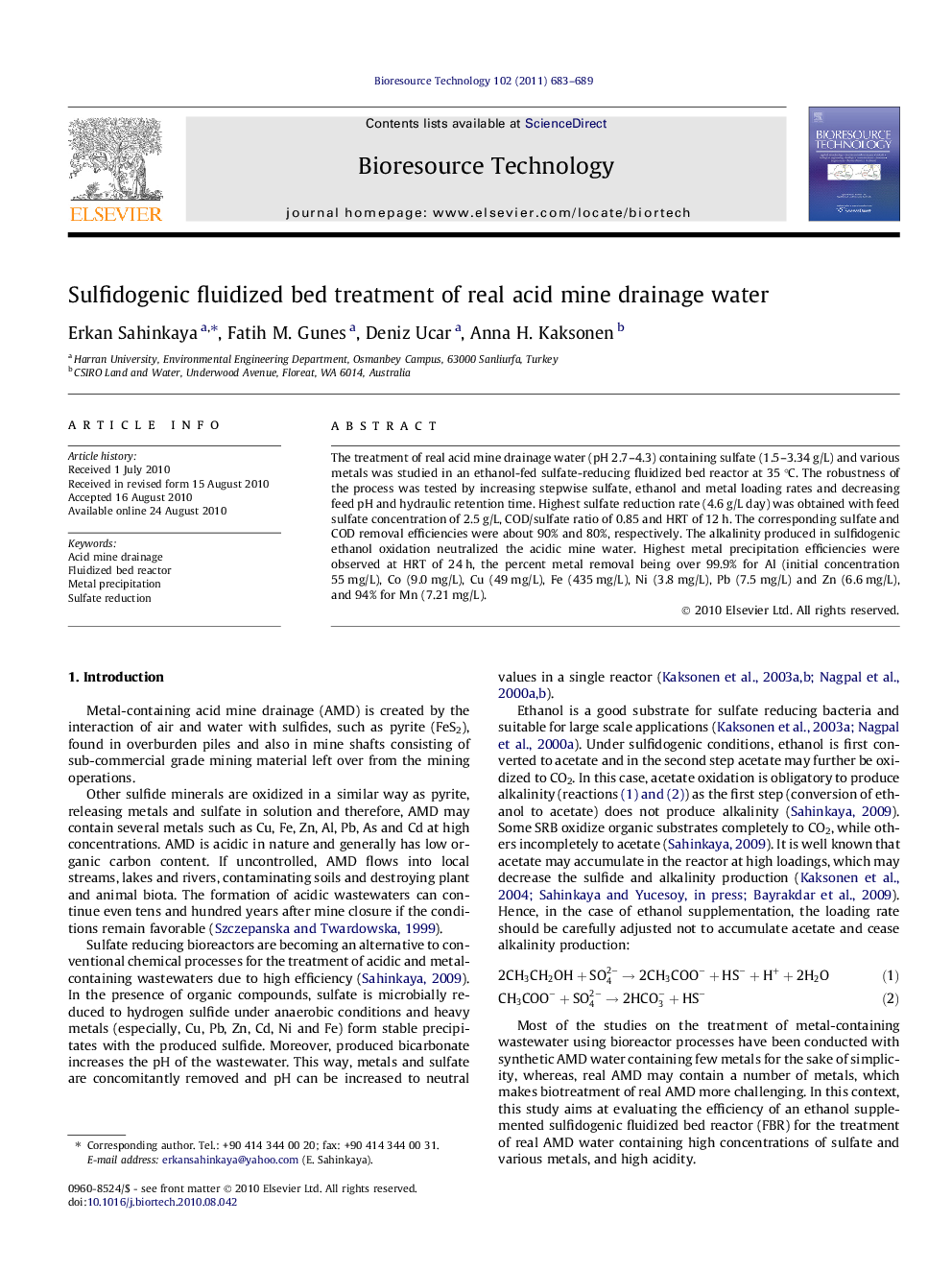| Article ID | Journal | Published Year | Pages | File Type |
|---|---|---|---|---|
| 682283 | Bioresource Technology | 2011 | 7 Pages |
The treatment of real acid mine drainage water (pH 2.7–4.3) containing sulfate (1.5–3.34 g/L) and various metals was studied in an ethanol-fed sulfate-reducing fluidized bed reactor at 35 °C. The robustness of the process was tested by increasing stepwise sulfate, ethanol and metal loading rates and decreasing feed pH and hydraulic retention time. Highest sulfate reduction rate (4.6 g/L day) was obtained with feed sulfate concentration of 2.5 g/L, COD/sulfate ratio of 0.85 and HRT of 12 h. The corresponding sulfate and COD removal efficiencies were about 90% and 80%, respectively. The alkalinity produced in sulfidogenic ethanol oxidation neutralized the acidic mine water. Highest metal precipitation efficiencies were observed at HRT of 24 h, the percent metal removal being over 99.9% for Al (initial concentration 55 mg/L), Co (9.0 mg/L), Cu (49 mg/L), Fe (435 mg/L), Ni (3.8 mg/L), Pb (7.5 mg/L) and Zn (6.6 mg/L), and 94% for Mn (7.21 mg/L).
